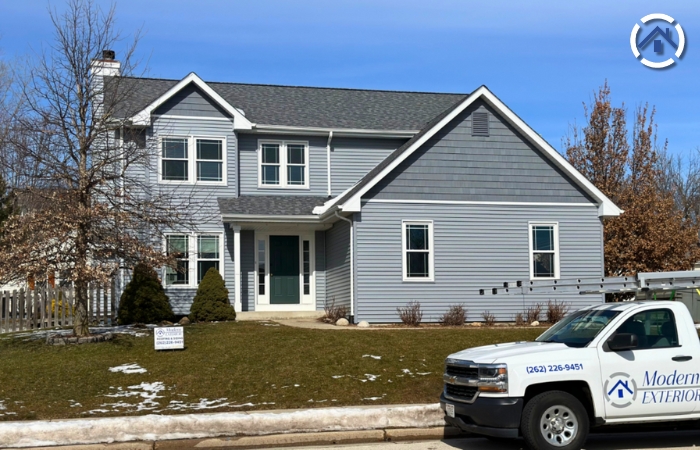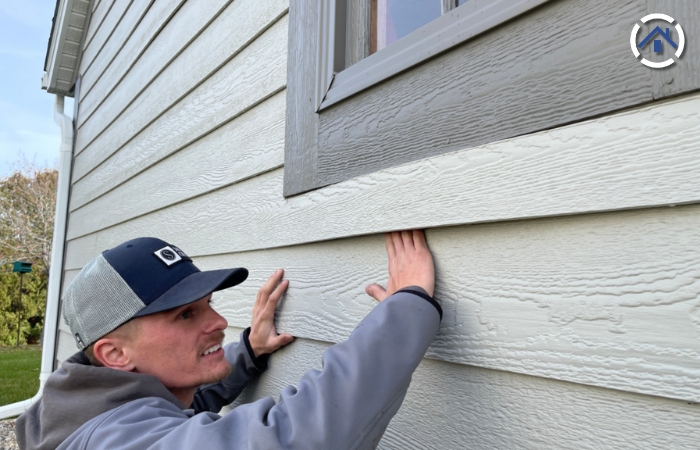
Your siding acts as the frontline defense, protecting your home from nature's elements. But it's more than just practical; it's a key aspect of your home's outward appearance, drawing the attention of all who pass by. As a homeowner, it's crucial to choose wisely and maximize the potential of your siding.
Below, you'll find a curated selection of the best siding materials for durability and aesthetics, empowering you to realize your vision for your home's exterior.
If you're after siding that offers both durability and visual appeal, here are some top choices for your home:

Composition:
Vinyl siding is manufactured primarily from polyvinyl chloride (PVC) resin, a synthetic plastic material. Various additives are incorporated during manufacturing to enhance its properties, including UV inhibitors to prevent fading, stabilizers to improve weather resistance, and pigments for coloration. The siding is typically produced in panels or strips through an extrusion process.
Durability:
Vinyl siding is highly durable due to several key factors:
Aesthetics:
Vinyl siding offers versatility in design and aesthetics. It comes in extensive colors, textures, and profiles, ranging from smooth panels to textured wood-grain finishes. Manufacturers often offer options that mimic the look of natural materials like wood, stone, or cedar shakes, allowing homeowners to achieve their desired aesthetic without the associated maintenance requirements.
The uniformity of vinyl siding, clean lines, and smooth surface contributes to its modern and appealing appearance.

Composition:
LP Smart Siding is an engineered wood siding product composed of wood fibers, resins, and waxes. These raw materials are combined and compressed under high pressure to create a durable composite material. The siding is typically manufactured in panels or lap siding profiles.
Durability:
LP Smart Siding is engineered to withstand the rigors of outdoor exposure while offering the natural beauty of wood siding. Its composition provides enhanced durability compared to traditional wood siding, as it is less prone to warping, splitting, or rotting.
Adding resin and wax additives improves its resistance to moisture, fungal decay, and pests, ensuring longevity and structural integrity. Furthermore, LP Smart Siding is designed to withstand impact, making it less susceptible to hail or flying debris damage during storms.
Aesthetics:
LP Smart Siding combines the timeless appeal of wood siding with modern manufacturing techniques, resulting in a consistent quality and aesthetic product. It comes in various textures and finishes, including smooth, cedar-grain, and textured wood styles, allowing homeowners to achieve the desired look for their homes.
The authentic wood-like appearance of LP Smart Siding and its uniformity and dimensionality adds depth and character to architectural designs, enhancing curb appeal and overall aesthetics, making it one of the best siding materials.

Composition:
Hardie Board siding, also known as fiber cement siding, is composed of a blend of cement, cellulose fibers (usually wood pulp), sand, and water. These components are combined to form a durable composite material that is molded into boards or panels.
Durability:
Hardie Board siding is renowned for its exceptional durability and resistance to various environmental hazards. Its cementitious composition provides superior strength and stability, making it highly resistant to impact, fire, moisture, and pests.
Unlike wood siding, Hardie Board does not expand or contract with changes in temperature and humidity, minimizing the risk of cracking or warping over time. Additionally, its non-combustible properties make it an ideal choice for areas prone to wildfires or fire hazards.
Aesthetics:
Hardie Board siding offers the authentic look of wood siding without the associated maintenance requirements. It comes in various textures and finishes, including smooth, wood-grain, and cedar-like appearances, allowing homeowners to achieve their desired aesthetic preferences.
Furthermore, Hardie Board siding can be painted in virtually any color, providing endless customization options to complement different architectural styles and design themes. Its dimensional stability and consistent coloration enhance its overall aesthetic appeal, enhancing the visual impact of residential and commercial properties.

Composition:
Wooden siding is crafted from natural wood species such as cedar, pine, spruce, or redwood. Depending on the chosen wood type and manufacturing process, wooden siding can be available in various styles, including clapboard (horizontal planks), shingles (individual overlapping pieces), or shakes (thicker, rough-sawn planks).
Durability:
The durability of wooden siding varies depending on the type of wood used and the maintenance practices employed. Cedar and redwood, for example, are naturally resistant to decay, insects, and moisture due to their inherent chemical properties.
Properly treated and maintained wooden siding can withstand the elements for decades, with routine sealing, staining, or painting helping to protect against weathering, rot, and pest infestation. However, without adequate maintenance, wooden siding is susceptible to issues such as rot, warping, and insect damage over time.
Aesthetics:
Wooden siding exudes warmth, character, and authenticity, adding timeless charm and curb appeal to residential and commercial properties. Its natural grain patterns, knots, and imperfections lend a unique and rustic aesthetic that synthetic materials cannot replicate.
Wooden siding also offers versatility in design, as it can be stained or painted in a wide range of colors to complement different architectural styles and personal preferences. Additionally, wooden siding evolves over time, developing a rich patina and weathered appearance that enhances its visual appeal and adds to the overall character of the structure.

Composition:
Aluminum siding is manufactured from aluminum alloy sheets, a lightweight and corrosion-resistant material. The aluminum sheets are typically coated with a protective finish, such as polyester or vinyl, to enhance durability and aesthetics.
Durability:
Aluminum siding is prized for its durability and longevity. It is inherently resistant to rust, corrosion, and moisture damage. Unlike steel siding, which can rust if the protective coating is compromised, aluminum maintains its integrity even in humid or coastal environments.
Its lightweight nature makes it easy to handle and install, reducing labor costs and structural stress. With proper care and maintenance, including occasional cleaning and repainting to refresh the protective finish, aluminum siding can last for several decades without significant deterioration.
Aesthetics:
Aluminum siding offers a sleek, modern aesthetic that complements contemporary architectural styles and design trends. It is available in various textures and finishes, including smooth, embossed, or brushed surfaces, allowing homeowners to achieve their desired look for their homes.
Aluminum siding comes in an extensive range of colors, from muted neutrals to bold hues, offering versatility and customization options to suit different tastes and preferences. Additionally, aluminum's reflective properties can enhance the overall brightness and visual appeal of a building, particularly in areas with ample natural light.
Choosing the ideal siding material for your home involves balancing durability and aesthetics. Each option offers distinct advantages, whether it's vinyl's versatility, LP Smart Siding's engineered durability, Hardie Board's fire and moisture resistance, the natural warmth of wooden siding, or the sleek modernity of aluminum. These best siding materials cater to various preferences and needs, allowing homeowners to select the best fit for their homes.
However, with the multitude of choices available, consulting siding experts and professionals is crucial to ensure you make the right decision. Their guidance can help navigate factors such as climate, architectural style, and budget constraints, ensuring your chosen siding not only enhances your home's appearance but also stands the test of time.